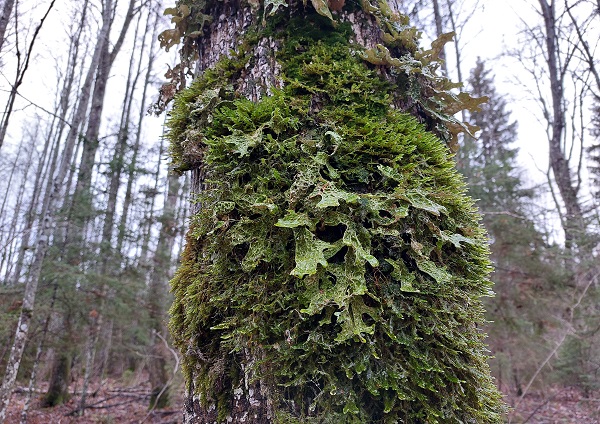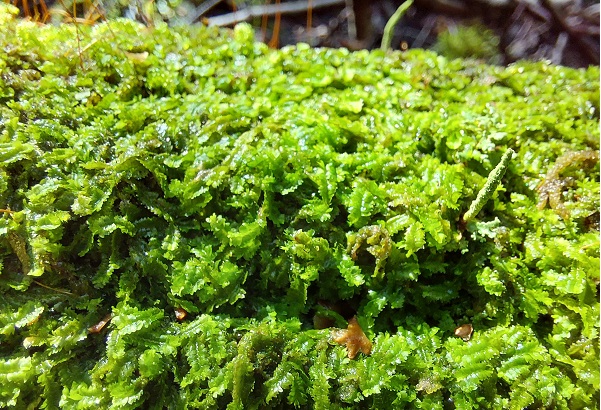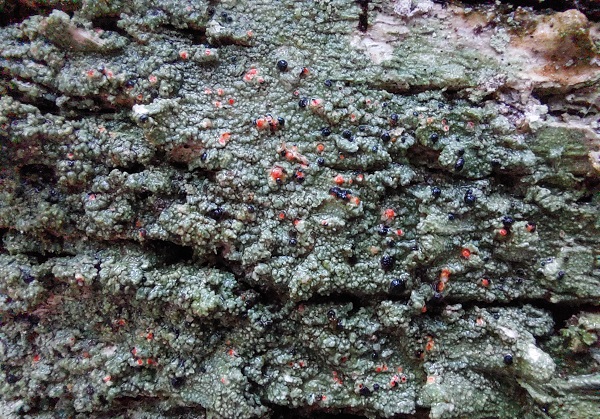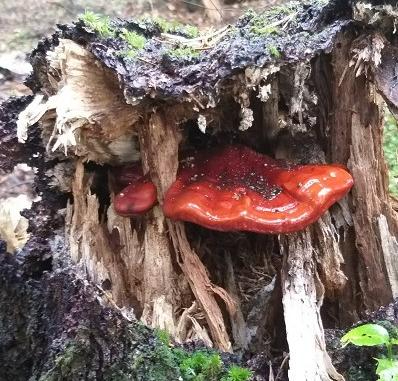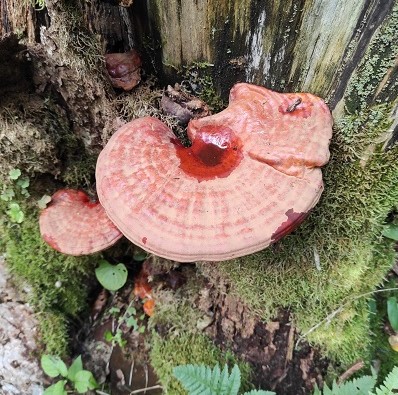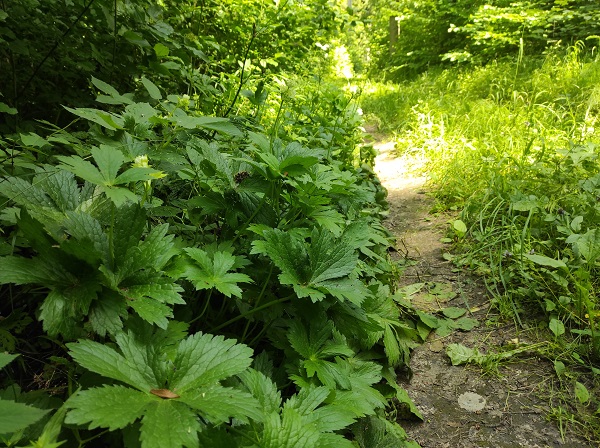Some Exciting Natural Finds in the Forests of Latvia
During winter, when nature calms down, researchers have more time to analyse what they have seen in summer. Last year, environmental experts of JSC “Latvia's State Forests” managed to find several deposits of rare species and unusual plant species.
Moss called turpswort (Geocalyx graveolens) grows in black alder groves and swampy birch forests. When touched, this moss releases its characteristic turpentine aroma. Last year, when environmental expert Ilze Kukāre surveyed the forest road to be rebuilt and assessed the impact of ditch cleaning in Western Vidzeme, both a new, unmapped marsh forest habitat and a turpswort site were found.
One of the most beautiful finds of last year is the lichen – the blood lichen (Mycoblastus sanguineus) in the vicinity of Ainaži, where it grew near other rare lichens such as Thleotrema lepadinum, Arthonia leucopea and Lobaria pulmonaria.
If the other lichens have been found in protected habitats, where the prohibition of forestry activities has been established, then Ilze Kukāre managed to find a mycoblast on the border of a plot near a prepared felling area. Large birches had fallen into the plot, and the mycoblast grew on them in a height of 2-3 m high. It would be difficult to notice it on a standing tree.
To ensure the protection of the mycoblast, the group of trees to be preserved in the felling area near the deposit is planned in a way to preserve the existing microclimate in the deposit.
Last year, environmental experts also managed to find a number of rare mushrooms in Latvia's State forests. Thus, for example, when surveying protected areas in the South Kurzeme region in a black alder stand, LVM environmental planning specialist Solvita Reine was attracted by a mushroom with a striking red colour. It turned out to be the rare Ganoderma lucidum that grew on an old, decayed black alder stump. This is the second Ganoderma lucidum deposit in the LVM South Kurzeme region identified by an environmental planning specialist.
Ganoderma lucidum is a rare mushroom in Latvia and it is included in the list of specially protected species. It mostly grows on deciduous stumps in summer and autumn, sometimes continuing to grow the next and even following years. The Ganoderma lucidum is covered with a hard, varnish-like layer, which makes it distinctly shiny both in moisture and dryness.
LVM environmental expert Dace Kroģere, when reviewing data that are at least 30 years old, last summer found a large-scale deposit of the very rare and specially protected great masterwort (Astrantia major) on the Latvian-Lithuanian border. Almost 500 specimens have been recorded in an area of about 3.5 ha, but it is estimated that the total area of the deposit could be more than 14 ha.
The great masterwort was once grown in parks and gardens, and in many places, it has tuned into a wild plant; however, natural deposits are extremely rare in Latvia.
In places where natural values are found, areas are created that include both the site of the species and the suitable forest around it, since an area for the protection of the species where forestry activities will not be planned. The most significant findings will be published in LVM's annual Environmental Report.
Last summer, the company's environmental planning specialist was lucky to find two new medical leech deposits in the lands owned by LVM.
“One of the new deposits is in the nature reserve “Ašu purvs” in Alūksne Municipality, but the other – in the nature reserve “Bardinska ezers” in the vicinity of Daugavpils. Although the findings do not change the general perception of the spread of the medical leech in Latvia, new sites, including in specially protected areas, are good news; it means that their population in Latvia is larger than previously known,” says Mārtiņš Kalniņš, LVM Environmental Planning Specialist.
Today, only small, fragmented populations have remained in Europe from the former large and dense population of medical leeches. In most European countries, the leech is considered an endangered species.
The medicinal leech (Hirudo medicinalis) is an invertebrate that inhabits freshwater bodies – both in the agricultural environment and in semi-natural and natural environments and in various ecosystems such as forests, meadows, swamps. Medical leeches feed on the blood of mammals, waterfowl and, less commonly, fish. The medical leech is sedentary, but crawls or actively and quickly swims when it notices its game. Depending on the humidity of the environment, short distances can also be covered by land.
The range of medical leeches extends from the Pyrenees and Apennines in Western Europe to the Ural Mountains in eastern Europe. In Latvia, the medical leech is found in lakes, old rivers, ponds and, in some cases, also in small bodies of water in almost the entire territory of Latvia.

